Lockheed Ventura, Emlagh, County Mayo, 1942
The townland of Emlagh lies to the south of Roonagh Point, a few miles west of the town of Louisburgh in County Mayo. It was here on the 30th of September 1942 that another aircraft of the Royal Air Force’s Ferry Command was forced to make an emergency landing after coming into difficulty on the long ferry flight from Canada.
At 09.20 hours that morning an aircraft made a forced landing near the coast on land belonging to Patrick James McHale. It's pilots brought it in for a belly landing, causing only slight damage to the aircraft.
The aircraft carried a crew of three English officers and an Australian Sergeant. The Irish Army was soon attending to the crash site, aided no doubt by local Gardai (Police) and members of the Local Defence Force (LDF). Captain Birthistle of the Irish Army's Western Command, Intelligence Section (G2) was one of the officers who attended the scene. In his reports back to the G2 section in Dublin he told how the crew stated that they had just finished their training in Canada. Their flight had taken over ten hours before they began to to run low on fuel and they elected to put down where ever appeared suitable. It would be almost 60 years before some of the facts were corrected by the men themselves. He reported being told by them that there was a '£100 bonus' for ferrying aircraft across the Atlantic.
The crew were not kept in Mayo for long, they were brought to
Athlone Barracks that same evening and were brought then to the
border.
On the day of the crash, a memo was prepared by the Irish Army
with the basic particulars of the days events. It reads:
FORCED LANDING OF BRITISH AIRCRAFT
NEAR ROONAGH POINT, CO. MAYO ON 30/9/1942
Previous movements of aircraft.
Intense air activity by British aircraft moving north
eastwards over Mayo and adjoining counties was noted from
08.30 hours onwards on the morning of the 30th
September. During the course of the activity one of
the aircraft concerned made a forced landing at Emlagh, near
Roonagh Point, Co. Mayo at 09.20 hours.
Exact position of landing.
Approximately two miles south of Roonagh Point, Co.
Mayonear southern entrance to Clew Bay.
Particulars of aircraft and damage
sustained on landing.
British twin engined medium bomber of Ventura type.
No. A.J.460. The machine, which was unarmed, made a
skid landing with landing gear retracted and sustained
slight damage.
Particulars of Crew.
The crew of four, particulars of whom are attached, were
unhurt and were removed initially to Louisburgh Garda
Station.
Cause of landing.
Shortage of petrol
Mission of aircraft.
The aircraft was on the last stage of a delivery flight from
Newfoundland to England having commenced her flight at 21:00
hours on the previous evening (29/9/42)
The memo was noted on the bottom to be distributed to the
Minister of Defence and the Secretary, Department of External
Affairs.
It is worth nothing that the memo highlights the aircraft being
unarmed. This was a means for the Department of External
Affairs to be able to determine the aircraft was on a non
operational mission and thus not consider the crew for
internment.
The story of the aircraft and it crew thus passed into history a local folklore until the 1990's when the former airmen themselves sought to track down where they had landed on that day in 1942. This was to see friendships created and a return visit by one of the airmen in 1996.
The crew of the aircraft gave their names to the Irish military
along with serial numbers and next of kin details.
On the 3rd of October Captain Birthistle filed the following
report to the G2 Branch of Western Command in Athlone.
Sir,
I have the honour to submit my report
on the above crash.
I arrived in Louisburgh at 15.50 hours on 30/9/42 where I
received instructions to pick up the crew of the aircraft
and their personal belongings and proceed without delay to
Athlone.
The crew were sleeping for about two hours and I had some
difficulty in getting them up. We proceeded to the plane
about 4 miles from Louisburgh where we picked up their cases
etc., and left Louisburgh at 17.40 hours.
The crew of four viz .:- P.O. R.M. Powell; P.O. Donaldson,
T. P.O. Drake G.F .; Sergeant E.L. Doyle. had been in Canada
for 12 months where they were trained and passed out in
their respective ranks. They were reporting back to England
for duty and flying a new plane across for which they get a
bonus of £100 when they reach their correct destination.
They left Newfoundland on the evening of the 29/9/42 after
being held up for a day due to bad weather reports over
Ireland. Their crossing time was 10 1/4 hours.
Their Radio had gone out of order, at least they could not
pick their signals. The weather over the West coast was very
bad - base of cloud down to 500 feet, and they were forced
off their course and were two hours overdue, - they should
be in Ayrshire, Scotland within the 10 hours. They found a
petrol shortage and made a forced landing. A report from our
Air Force Officer shows 500 gallons approximately in the
plane.
The plane contained some parcels and cases lashed to her
side. These were assigned to different War Departments
and officials in England. On instruction I
removed all parcels and cases which I did not think were
parts of the plane. A number of parcels I left behind
which contained spare parts and bore the
plane number AJ.460. These cases and
parcels I handed over to Command I.O., Athlone.
The plane was a low winged twin-engined Ventura - an
improved Hudson type. She is
powered with two 1600 H.P. 18-cylinderengines
- she is a special design for Coastal Command.
The crew made a full inspection of the plane and the damage
before leaving and measured up the ground - for taking off
purposes. They said if the plane had two new air screws she
could take off into a North West wind. They maintained that
the small damage to undercarriage would not in any way
prevent the plane from taking off.
The story of the landing of AJ460 is told in great detail by non other than Eric Doyle in his 1990's published biography, 'Just Call Me Joe: The life story of Eric Doyle known as 'Joe' in the army and air force and other places'. In this work, he describes his background from having joined the Army underage in 1940 to volunteering for aircrew duties in 1941. He takes the reader through his basic training in Australia, his voyage across the Pacific to Canada and the rip roaring adventure that was his time in training as a wireless operator/air gunner in various training establishments of the British Commonwealth Air Training Plan (BCATP) in Canada. It was near the end of this period that he joined up with two of the men on Ventura AJ460, R M Powell and G F Drake. They trained together as a crew on Lockheed Hudson's at 31 Operational Training Unit (OTU) at Debert, Nova Scotia. They were assigned to the then new Lockheed Ventura bomber and prepared for the dangerous single leg ferry flight to the United Kingdom. P/O Donaldson was assigned to them for this flight but was retained by Ferry and Transport Command for the remainder of the war. Following their short stay in the west of Ireland, Powell, Drake and Doyle were posted back to Northern Ireland where they crewed up on the Vickers Wellington at 7 OTU at Limavady near Derry. From here they collected a new Wellington bomber and flew it over nine days to India where to their dismay they found themselves relegated to second line ferrying operations for a number of weeks. Eric Doyle returned to the UK just before Christmas 1944 and it appears that Powell and Drake did so also. They each took on different duties from this point but stayed in contact.
P/O Richard Meyrick POWELL 123003, (Pilot), Royal Air Force.
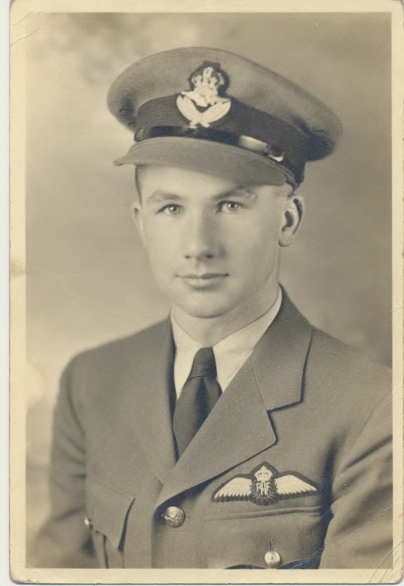
Richard Meyrick Powell was born in Oswestry, Shropshire in late
1919, the son of Thomas Powell and Mary Baker. On the day of the
crash he informed the Irish officers that his fathers address
was in Gobowen near Oswestry. He was one of the pilots on
board the Ventura for its ferry flight. His presence on AJ460
suggests that he had only recently completed training in Canada
and that this Ferry Flight, the only one recorded on his Ferry
Command assignment card, was his transfer back to the UK for
combat assignments.
His log book records the flight and the landing in Ireland
without any fanfare. The list of flights in Wellington
aircraft indicate that he was also posted to 7 (C) Operational
Training Unit, where Eric Doyle explains he, Powell and Drake
were posted after arriving in Europe.
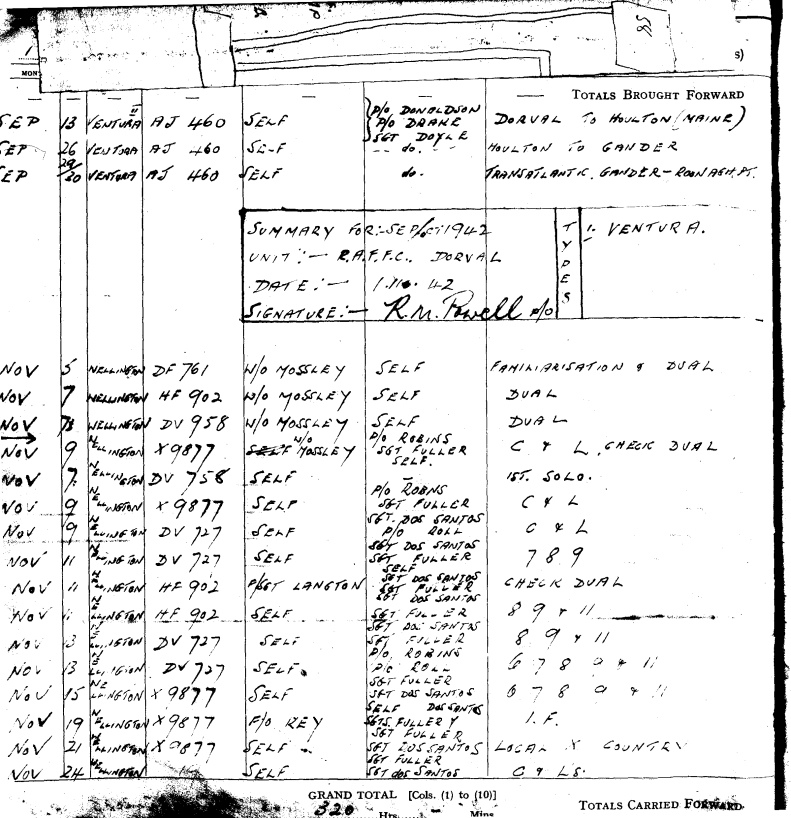
His promotions were published over the following years in the London Gazette. Richard's name was published on the same page as G F Drake in June 1942, announcing their promotion to the commissioned rank of Pilot officer, effective from January and March respectively of that year. By early 1944, he had reached the rank of Flight Lieutenant in the General Duties Branch of the Royal Air Force Volunteer Reserve. He was able to attend Eric Doyle's wedding in August 1944. He remained in the RAF post war, at this time it is not clear what other duties he performed after returning from India in 1944. In 1951, his name appears having taken a two year commission in the RAF Aircraft Control Branch, the service of Air Traffic Control as it might be referred to now. This commission was relinquished in 1953. His name afterwards seems to appear in civil service lists related to air traffic control work. Richard passed away in 1999 in Berkshire. Not much else is known about R M Powell at this time and his Ferry Command card did not carry a photo.
P/O Thomas Neville DONALDSON 124779, (Pilot), Royal Air Force
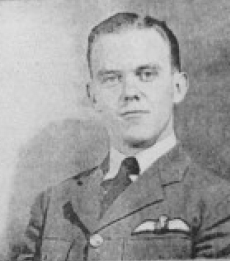
The second pilot on Ventura AJ460 was Thomas N Donaldson,
a fresh young pilot from Kent. Unlike the others who flew that
day in Ventura AJ460, Thomas remained posted to Ferry Command
and later RAF Transport Command. AJ460 was his very first ferry
but between 1942 and 1944 he ferried a great many more aircraft.
His return to Canada after 'escape' from Ireland was on board
Lancaster R5727 as a passenger. This bomber was being sent to
Canada as a pattern aircraft to assist the setting up of a
production line for that aircraft in Canada. In 1944 he
progressed on to flying dignitaries from North America to the UK
and elsewhere. In May 1944 he had been posted to take delivery
of Winston Churchill's new Douglas C-54B transport, Skymaster I
EW999. This found him flying as co-pilot with Wing Command W H
Biddell on the well known converted Liberator transport, AL504.
This activity culminated with his being one of the pilots that
flew to Moscow in October 1944 with part of Churchill's military
staff. Churchill himself traveled on a Avro York transport.
Thomas's final wartime posting was to San Diego from where he
flew regular transport missions to Sydney across the Pacific
Ocean. These continued up to December 1945 at least.
Through his family, Thomas provided a copy of his wartime
memories. Thomas stayed on in America after the war and became a
citizen of the country. He passed away on January 21, 2013
in Pennsylvania. Thomas and Jocelyn were married in August
1944 in Montreal, Canada. The photos below of Thomas with
his wife were supplied by his family.
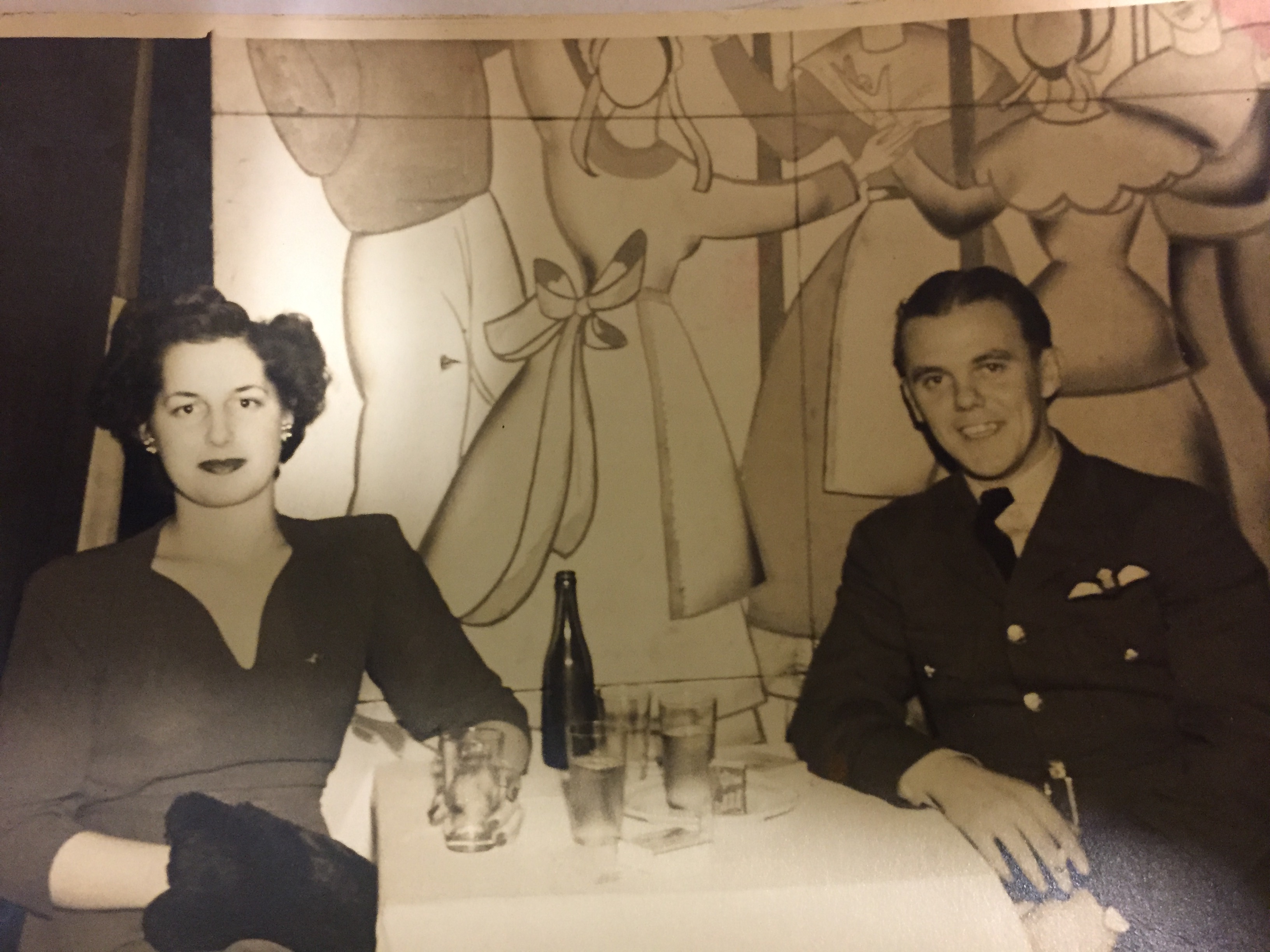
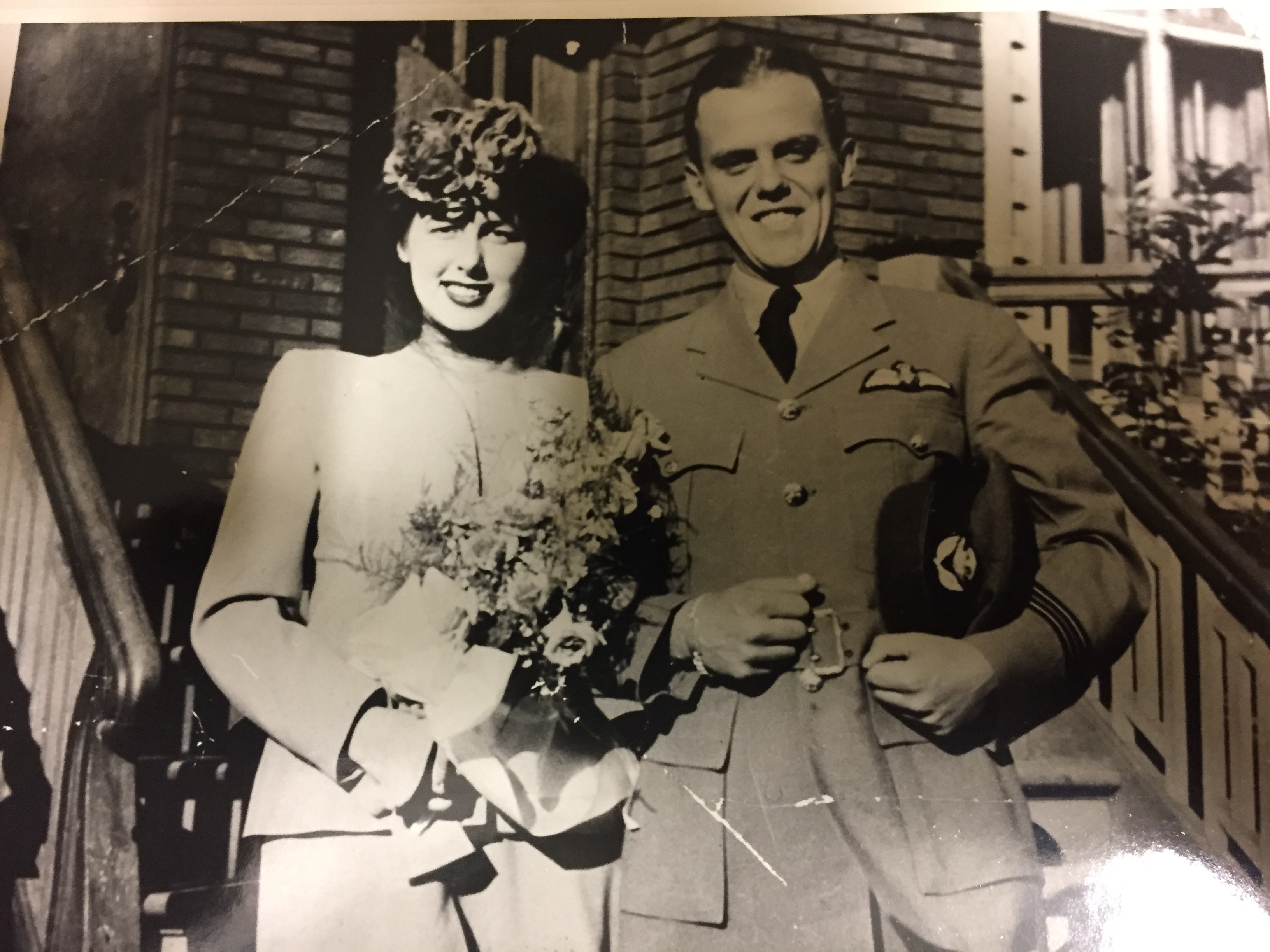
P/O Gilbert Frederick DRAKE 120968, (Observer (Navigator)), Royal Air Force
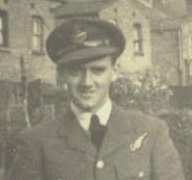
The Navigator of AJ460 on its delivery flight was an RAF
officer, Commissioned about the same time as P/O's Powell and
Donaldson. Gilbert Frederick Drake came from Worchester,
born there in 1922. In the 1939 register, he is found
living at home with his parents, Rose and Frederick Drake.
His training was also completed in Canada and as early as
March 1941, a record on ancestry.com seems to identify him
crossing the border at Buffalo, New York as an airman of the
RAF. Its not clear if he was visiting or enroute for training.
Gilbert Drake had returned to the United Kingdom by early 1944
also. He was posted to a Meteorological unit according to Eric
Doyle's post war writing. 'Gil' Drake visited the location of
his wartime adventure in 1996 when he and his wife visited
Emlagh and met some locals who had witnessed their landing in
1942. Eric Doyle included Gil's story of his visit in his
writing:
RETURN TO EMLAGH - A REVELATION
 by Gil Drake
by Gil Drake
After nearly 54 yrs. I went back to Emlagh on a bright sunny
afternoon of 15th May 1996. This time I came, not out of the
skies in Ventura AJ 460, more precisely by car, accompanied
by my wife, Gerry Bracken , Jarlath Duffy and Dominic Moran
of the Westport Historical Society, Noel O'Neill of the
Castlebar Historical Society and Don Gibbons, an ex R.A.F.
navigator. Gil then expresses his thanks to every one for
making the visit such a success, in particular Gerry
Bracken.
Joe Lyons, claimed in the Louisburg Journal as the first man
on the scene in 1942, and now a sprightly 85, had not been
told we were coming, but his younger brothers had made sure
that he would be at home that afternoon. After a very
reserved opening he became more and more relaxed.
In the course of the afternoon and in the end we had a job
to get away. His only regret was that he had not been warned
so that he could have got a bottle in which we could have
shared with him.
Joe's memory of the day in 1942 is astonishingly vivid. He
was able to describe, in detail, just how and where we had
circled in the area before putting the aircraft down, in
probably the only flattish field, just behind the beach.
Joe's verdict was that Meyrich Powell must have been " ...
one of the nicest men he ever met and a darn good pilot "
and he was certainly . He remembered his age (24 and
commented "what a good looking fellow he was." He didn't
really remember me but commented that there was a small slim
chap among them.
Although his memory is vivid, he continues to believe in
certain misconceptions which he enunciated with a twinkle in
his eye. First of all we were Canadians- it is possible that
we were responsible for this belief, after all we were
coming from Canada. Secondly when we flew out over the sea
before coming back to land, we did so to dump our guns and
bombs. Thirdly we landed at Emlagh deliberately to get out
of the rest of the war. We were not out of fuel, and the 500
gallons in the tanks in the Louisburgh Historical Journal
has now grown to 1700 gallons. Were not the local people
good to have left that untouched at the time of petrol
rationing? Or was that because a small army section was
posted to Emlagh to guard the 'plane.
After a little while we were joined by James and Brendan
Lyons (Joe's younger brothers ) and Christina (James' wife).
James who was eight years old in 1942, has a clear memory of
the occasion and like Joe, could describe in detail how we
had circled low around the area. Christina showed us a hand
written diary of her fathers, describing the incident, and
there were tears in her eyes when we shook hands and she
said, "Are you really one of those boys ? " Brendan, who was
2 1/2 at the time, said that he was taken into the aircraft,
in his mother's arms, because he might never have another
opportunity like that.
Considerable interest was shown by everybody in the way in
which we had been whisked rapidly back to Britain.
Apparently, it is only in comparatively recent times that it
has become public knowledge that there was an escape line
from Eire for members of the British forces. Most people
believed that we had been interned in the Curragh. `
I hope this makes interesting reading and does some small
justice to what was for me a most nostalgic, but also a most
enjoyable and memorable occasion.
In 1996, he also had a longer article published in the An
Choinneal journal. That was a periodical of Kilgeever
parish (Louisburgh, County Mayo). The oldest parish
magazine in Ireland, it had appeared in alternate years since
1959.
Gilbert Drake passed away in Worchester, aged 82, in November
2004.
Eric Doyle's family were able to provide these additional
photos with 'Gil' in them.

The first photo has written on the back "Taken on the banks of the severn at
Worcester in March 1943. Gil Drake my observer and
myself. Gil’s just my size and I wore his civies quite
a lot."
The second and
third photos are Eric Doyle and Gil Drake: “Gil
and myself at his house in Worcester”
Below then is the
wedding of Gilbert Drake from Eric's book.
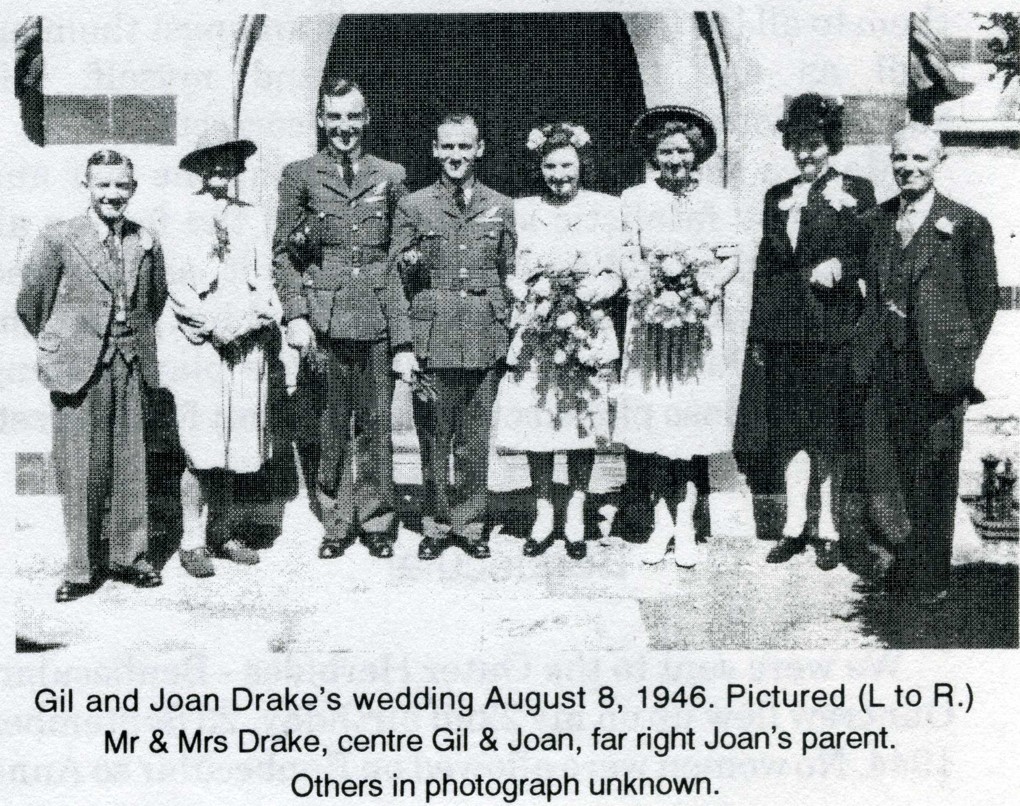
Sgt Eric Lee DOYLE 412330, (Radio Operator), Royal Australian Air Force
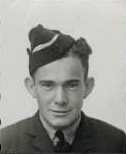
Eric Lee Doyle came from New South Wales, Australia. He
enlisted in 1941 and after basic training was sent to Canada for
training in his trade of Radio Operator/Air Gunner. He attended
4 Wireless School and 3 Bombing and Gunnery School. His transfer
to Europe took place with a posting to RAF Ferry Command and the
flight of Ventura AJ460. His Ferry Command Card shows his one
and only delivery flight was on AJ460. Arriving in the UK in
September 1942 after the landing in Ireland, he was posted to 7
Operational Training Unit until March 1943. From here he was
assigned to a different form of Ferrying operation when he was
posted with 303 Ferry Training Unit. During 1943, he was posted
to India along with Powell and Drake and two new crew members.
They were posted to 36 Squadron in India but that unit did not
need their services so the next few months were spent ferrying
various aircraft around India. At the end of that year he was
back at OTU in the UK and was was finally posted to 179 Squadron
of Coastal Command in mid March 1944. He flew with that unit on
patrol missions until June 1945 with a crew consisting of four
Australians and a Canadian pilot. 179 Squadron were flying
Vickers Warwick aircraft at that time.
Eric returned to Australia after the war and passed away in 2012. He lived in Wauchope, New South Wales and was an active member of the local Rotary Club who published an extensive obituary for him in their bulletin in June 2012. it can be read on their website, http://www.wauchoperotary.org.au/wp-content/uploads/2011/07/Bulletin-48-19-June-2012.pdf. The main website can be acessed from this link.
This wonderful photo of 'Joe' Doyle were supplied by his wife
and son. They show him with his wife Anne, a member of the WAAF,
whom he married in England in August 1944. R ichard M
Powell and Magnus G Magnusson RCAF were at the wedding, Gilbert
Drake could not get leave however the newly married couple spent
their honeymoon staying with Drake's parents in Worcester.
M G Magnusson is the pilot standing on the right of the photo
buts its not clear who the pilot on the left of the photo is.
ichard M
Powell and Magnus G Magnusson RCAF were at the wedding, Gilbert
Drake could not get leave however the newly married couple spent
their honeymoon staying with Drake's parents in Worcester.
M G Magnusson is the pilot standing on the right of the photo
buts its not clear who the pilot on the left of the photo is.
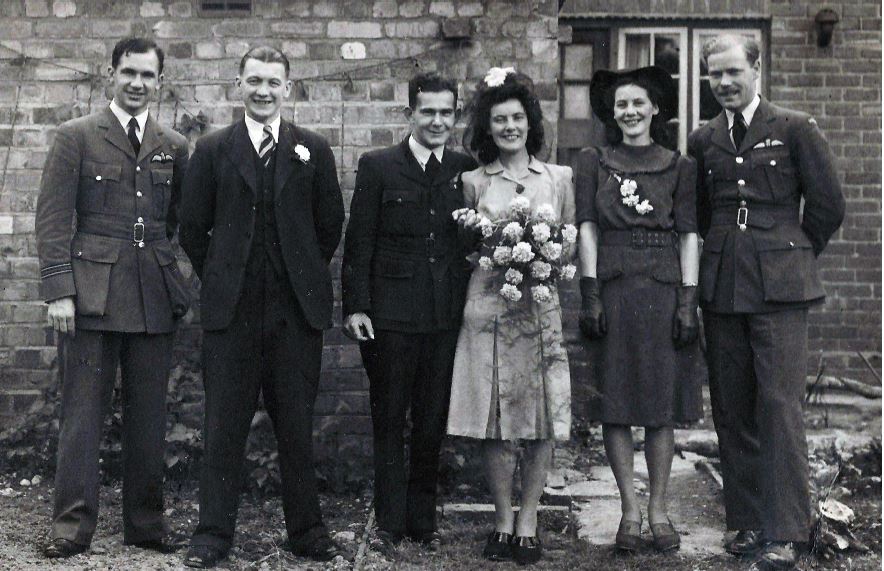
Ventura AJ460 was however not done with the war. While it
say forlornly in the Emlagh field, Irish Air Corps personnel
inspected the aircraft and determined that it would need to be
dismantled with UK assistance due to the soft ground and
unfamiliarity of Irish salvage teams with the Ventura.
The Irish Army reports then go on to detail a five week long
effort needed to dismantle the aircraft and remove it from the
scene. The weather became stormy, and the location was on
ground that was partially the strand and bog.
On the 22nd October, an RAF team crossed over the border with
three articulated trucks, one crane and a lorry. The
aircraft was finally removed from there on 25th October.
Its history card, Form 78, then tracks it movements. At
the end of December 1942, the airframe was taken on the books of
226 Maintenance Unit based at Mallusk in Northern Ireland.
By June 1943, it was back in England and was assigned to 29
MU. Then from October 1943 to May 1945, it served
with 60 Operational Training Unit (OTU) and later, that
unit disbanded the aircraft was absorbed absorbed into 13 OTU.
Compiled by Dennis Burke, 2024, Dublin and Sligo. If you
have information on any of the people listed above, please do
contact me at irishwarcrash@yahoo.com
With thanks to the Doyle and Donaldson families.

